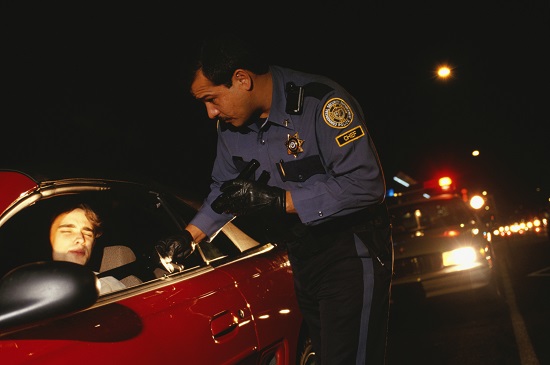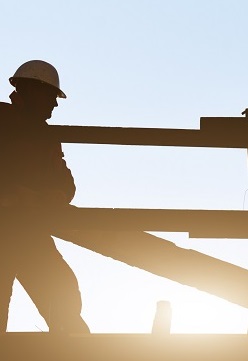An official website of the United States government
 United States Department of Labor
United States Department of Labor
| October 2015
Who’s working at sunset—or at 2 a.m.? Lots of people, including reporters, nurses, and police officers.
Most workers clock in during the day. But night owls and early birds have a place in the workforce, too. If you start feeling productive after dusk, for example, you might want to look for jobs with evening hours. Or maybe you feel most energetic before dawn, when many people are still in bed.
Whatever your preference, there may be work options to fit that schedule. Keep reading to discover which workers often have nonstandard hours.
Workers are most likely to be on the job between 8 a.m. and 5 p.m., U.S. Bureau of Labor Statistics (BLS) data show. (See chart 1.) However, some work atypical hours. For example, about 29 percent of workers were on the clock at 7 a.m. At 9 p.m., about 12 percent of workers were on the job. By 2 a.m., that percentage fell to 3 percent. In order to examine when people work and what they do, we divide hours of work into three selected groups:
Although this article puts occupation groups into 1 of 3 categories, there is often overlap in hours worked. For example, many food preparation and serving workers are on the job late at night. But some, such as coffee shop employees, might work very early in the morning—or at other times. Similarly, occupations that involve working through the night frequently have relatively high percentages of workers on the clock in the evening and early morning.
And occupation groups that offer nonstandard hours usually have jobs with standard hours, too. Some healthcare workers may be on the job in the evening, through the night, or in the early morning, for example—but plenty of others in this group work during the day.
Charts highlight the percentages of workers in an occupation group working on their main job during the selected hours. Illustrative examples are given for each occupation group.
Restaurants and bars, hotels, movie theaters, casinos, and other entertainment venues regularly hire people to work between 6 p.m. and 10 p.m. Evening work also may be common at places such as nail salons and retail establishments. The occupation groups shown in chart 2 often have higher-than-average percentages of workers on the clock during the evening.
Arts, design, entertainment, sports, and media. Musicians, directors, and broadcast technicians are among the workers who help to entertain or inform audiences into the evening.

Food preparation and serving related. Waiters and waitresses, bartenders, and fast-food workers are some of the occupations in this group that are often on the job during evening hours. This occupation group had high percentages of workers who, for example, covered the dinner shift at restaurants and other eating places.
Personal care and service. After work, many people try to find time for leisure or personal care activities. As a result, workers such as hairdressers, fitness trainers, and skincare specialists frequently are on the job at 6 p.m. or later.
Sales and related. This group had a relatively high percentage of people working earlier in the evening. But because many stores close by 10 p.m., the percentage was lower than average at that time. Examples of occupations in the group are retail sales workers, real estate sales agents, and cashiers.
Between 11 p.m. and 3 a.m., most people are sleeping. But certain jobs may involve working through the night. (See chart 3.)
Police and fire departments, manufacturing plants, hospitals and nursing homes, and transportation and warehousing companies are some of the places where people toil into the wee hours of the morning. In fact, because these establishments frequently operate nonstop, people in these jobs might be working at almost any hour.
Healthcare practitioners and technical. Doctors, nurses, and paramedics are a few of the many occupations in this group that are needed to care for patients at all hours of the day and night.
Healthcare support. Providing patient or animal care might involve nighttime hours for some healthcare support workers. Examples of those who might work through the night are nursing assistants, psychiatric aides, and veterinary assistants.

Production. To maximize output, many facilities operate continuously. They employ workers in multiple shifts, including overnight, to keep production going. Occupations in this group that might require night shifts include bakers, assembly line workers, and machinists.
Protective service. Firefighters, police officers, and security guards are among the protective service workers who have all-night shifts to ensure public safety.
Transportation and material moving. These workers help to move people and goods throughout the country—often while others sleep. Truckdrivers, air traffic controllers, and conveyor operators are some of the occupations in this group in which workers are needed at night.
Early risers might consider the occupation groups in chart 4, which often have higher-than-average percentages of workers on the clock between 4 a.m. and 8 a.m.
Places where workers might get a jump start on the day include farms and ranches, construction sites, and utilities companies. In the occupation groups shown in the chart, high percentages of workers are also on the job beginning at 9 a.m. What sets these workers apart from other daytime workers is the earlier hour at which they begin their days.
Architecture and engineering. Workers in this group don’t start quite as early as some others in this section, but at 7 a.m. more than one-third of architecture and engineering workers were at their jobs—a number greater than the average for all workers. Occupations in this group include architects, petroleum engineers, and civil engineering technicians.

Construction and extraction. Carpenters, equipment operators, and roofers are just a few of the many types of construction and extraction occupations that may involve early morning hours. Although relatively small percentages of workers in this occupation group were on the clock at 4 a.m. or 5 a.m., more than half of all construction and extraction workers were on the job by 7 a.m.
Farming, fishing, and forestry. To accomplish their many daily tasks, such as tending to animals or crops, workers in this occupation group often must start at or before daybreak. Agricultural equipment operators, ranchers, and fishing workers are examples of occupations in the group that may require early hours.
Installation, maintenance, and repair. Equipment can break or malfunction at any time of day. When that happens, people usually want to have it fixed as soon as possible. This requirement creates early morning job opportunities for workers such as aircraft mechanics, industrial machinery mechanics, and telecommunications equipment repairers.
The data in this article come from the American Time Use Survey, which provides a snapshot of how people in the United States spend their time. The percentages shown in the charts are annual averages for 2011–14. They measure employed people ages 15 and older who were working at their main job on days they worked. Read more about this survey in the American Time Use Survey user’s guide.
Learn about the occupations mentioned in this article—and many others—from the Occupational Outlook Handbook.
The U.S. Department of Labor has resources on night and shift work, including information about wage laws and potential hazards.
Contact your state Labor Market Information office for local statistics related to occupations in this article that have high percentages of workers on the clock at nonstandard hours.
Elka Torpey, "Careers for night owls and early birds," Career Outlook, U.S. Bureau of Labor Statistics, October 2015.